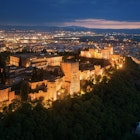
This thriving flea market is Europe's largest but its future may be under threat

Jul 9, 2020 • 2 min read

The coronavirus has caused widespread concern that El Rastro could change for good ©Vanessa Galvan/Getty Images
A visit to El Rastro in Madrid (the city's oldest and Europe's largest flea market) is almost obligatory for first-timers to the Spanish capital. Every Sunday crowds browse second-hand wares among the hundreds of stalls that line the narrow streets of La Latina. It's a tradition that gets more colorful and cherished with age but there are widespread concerns that its future is in serious doubt.
Over 500 people marched in Madrid last weekend in a demonstration to highlight the struggle of the beloved El Rastro. The famous flea market shut up shop on 15 March when lockdown restrictions were imposed in Spain. According to El Pais, a return to business was supposed to happen on 8 June in the third phase of Madrid's deescalation plan. That never happened. Now there's no clear-cut timeframe of when the market will open due to disagreements between stallholders and the city council about what it will look like when it does eventually reopen.
Can tapas survive the COVID-19 pandemic?

Madrid's mayor has permitted just 135 rotating stalls to return per week, roughly 12% occupancy, with a view to increase it by up to a quarter later down the line, and spread it out across different zones not typically associated with the market. Without these new guidelines in place, the market can't reopen.
But vendors represented by various groups including the Asociación El Rastro Punto are proposing operating at 50% occupancy, that is around 450 of the licensed 900 vendors to operate on a bi-monthly rotating basis to give everyone a chance. They're calling for adequate policing to maintain social distancing and for a guarantee they can hold the spot their families have held for generations. Without these guarantees, many vendors believe it just won't be viable to open shop.

In a statement, the association said the council's plan "will be a disaster for the historic Rastro stands, a loss of the identity of one of the most emblematic places in the capital, the place of thousands of stories, poems, portraits." They say that if it disappears, so too will "much of the identity of the city and part of its historical heritage." It's hoped that a mutual agreement can be reached on Sunday after vendors meet with the council.
For around four centuries, people have wandered through the Ribera de Curtidores on Sundays to browse the wares of El Rastro. It started off as a meat market and evolved into one that sells all kinds of knick-knacks, junk, trinkets and treasures. Along the steep, narrow streets that surround it in the barrio of La Latina are antique stores, fashionable bars, restaurants and art galleries that draw big crowds of all ages on Sundays when the market, music and street performers are in session.
You might also like:
Why I live in both Madrid and Barcelona – and which city I prefer
How visiting the world’s busiest museums has changed
Madrid's oldest restaurants and bars offer tapas, vino and history
Explore related stories



 Art and CultureCopy my trip: An unforgettable family trip to Spain with Elsewhere by Lonely Planet
Art and CultureCopy my trip: An unforgettable family trip to Spain with Elsewhere by Lonely PlanetNov 19, 2024 • 4 min read
 Festivals & Events8 of the best cities in Europe to celebrate New Year’s Eve
Festivals & Events8 of the best cities in Europe to celebrate New Year’s EveNov 6, 2024 • 7 min read













